What to Watch: Luxury Outerwear Firms Diversify, Beef Up E-commerce, and Enter Collaborations

Women’s outerwear got a nice lift in 2022 and it’s expected to grow even more this year.
North American companies such as Mackage, Canada Goose, Moose Knuckles, SAM, and The North Face have undertaken a variety of tactics to create a year-round business, including diversifying their product offerings, capitalizing on skiwear, selling seasonless merchandise, doing collaborations, building their e-commerce business, expanding internationally, and opening pop-ups and freestanding stores.
More from WWD
In the 12 months ending November 2022, women’s outerwear sales in the U.S. generated $8.1 billion, an increase of 7 percent over the prior year, according to NPD consumer tracking data.
Tanya Golesic, chief executive officer of Mackage, the Montreal-based global luxury outerwear firm, said, “Our big megafocus for the first three months especially is ski. We’ve been doing ski for a really long time and you see a lot of people are moving into that space. Where we have the competitive advantage is not only do we make beautiful, quality product and we make fashion product, but we’re also fully functional.”
Mackage’s ski collection includes accessories, snow boots, jackets, ski suits, pants/suspenders, turtlenecks, leggings and jumpsuits. Its regular collection includes items to wear après-ski. Ski goes into the stores in February and March, and then the brand transitions into spring.
Freestanding retail is another big opportunity for Mackage. In December, the company opened a store on Rue St. Honore in Paris and a ski pop-up in Megève, France. In February, it will open a pop-up and do an art installation with Harry Nuriev of Crosby Studios in Courchevel, France. “Part of our strategy for ’23 is our focus on Europe,” she said.
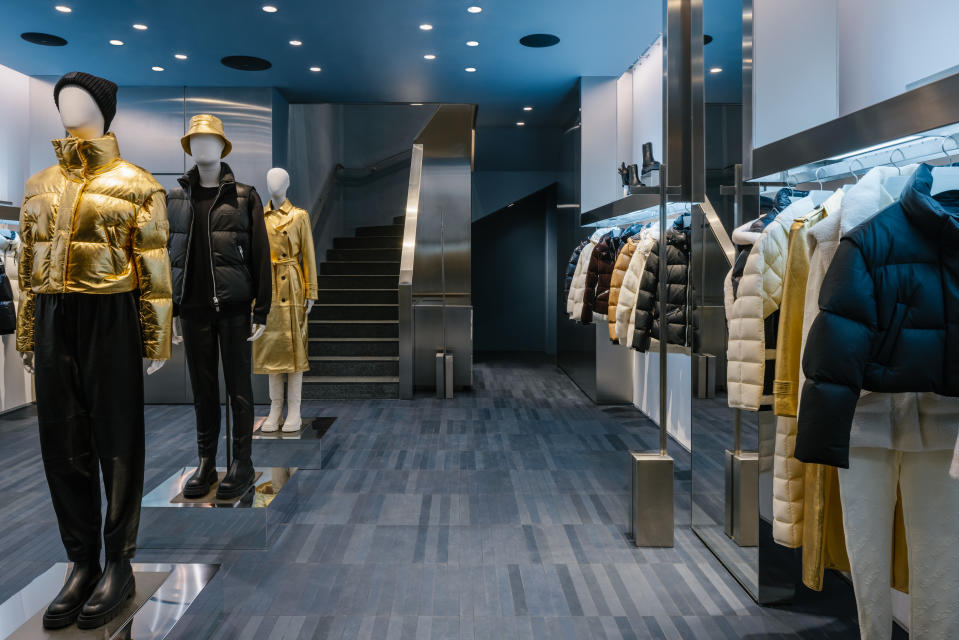
Starting last November, Mackage had a collaboration with Crosby Studios, the New York Nets and the Barclays Center in Brooklyn, attracting such celebrities as Roger Federer and Jennifer Connolly. While the installation has ended, throughout the season there is a Mackage coat-check at the arena, and the company has relationships with the Nets players. In addition, from Jan. 11 to 15, it will have a Mackage Snow Polo team in the World Cup of Snow Polo in Kitzbuhel, Austria, where the team members will wear Mackage.
Creating a seasonless product is another 2023 initiative. “We can’t only show up in the snow, so when we open stores in Dallas or Miami, we need to make sure that we’re covered from a seasonality standpoint. The beauty of Mackage is we were actually born in leather, wool and cashmere, and then we moved into down and puffers. We’re kind of going back to our heritage in terms of our product mix. I don’t think it will ever be a 50/50 (fall to spring) business for us, but I do think that we will definitely continue to grow our spring business over the next two years. It’s a big focus for us,” Golesic said.
The CEO said that “2022 was a very strong year, a lot of expansion, a lot of store openings. It’s been a great year, a year of growth and we’ll continue to grow [this] year. The focus [this] year will be on Europe, and continuing to grow our e-commerce business.” For fall 2023, the brand will release a higher price point collection, with outerwear retailing from $3,500 to $5,000. The company brought in freelance designers who have worked at Bottega Veneta and Burberry and has upgraded fabrics and styling.
Sustainability has also been important, from packaging to product, and the company is working toward its B Corp certification. It will continue to use recycled nylon. Fur has shifted into non-fur, especially at wholesale. Mackage still has fur in some of its stores, but it’s drastically reduced and the company will continue to phase it out. But it will continue to answer that need with shearling and other types of non-fur products that gives the drama the consumer is looking for.
“Next year is about elevation and sophistication. It’s shifting the paradigm into quiet branding, a little more dressed up. A little more elevated so it’s not so logo driven,” said Golesic. She said the company also plans to do an event during New York Fashion Week.
Carrie Baker, president of Canada Goose, the Toronto-based lifestyle company, said, “As we look ahead to 2023, we’re focused on three key areas: Humanature, engaging women, and reconnecting internally and externally.”
In Humanature, the company has an aggressive Sustainable Impact Strategy so it will be making new commitments and setting its Scope 3 targets. “We’ll also be catapulting ourselves towards our preferred fibers and materials goal with styles made of recycled, organic and bio-based fibers,” she said. The company also plans to grow its women’s business from the current 50 percent to about 60 percent. That includes building on its ad campaigns and a new collaboration with Reformation.
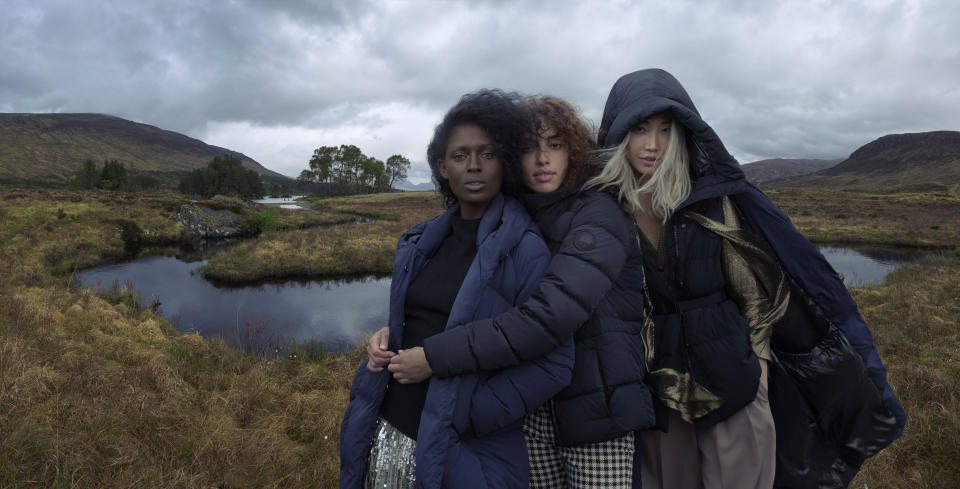
Canada Goose plans to open more stores across the U.S. in 2023, with eyes on the West Coast in particular. “Continued expansion in EMEA and Asia Pacific is also on our radar. While half of our stores are located in APAC, our footprint is still relatively small so you’ll see continued growth in China, Japan and South Korea this year,” said Baker.
Turning to brick-and-mortar opportunities in China, she said the company opened stores at Xi’an SKP, Tianjin MixC and Qingdao Hisense, and its ChengduSKP store — the second in the city — will open in the coming months. “We also saw strength during the recent holiday periods — Golden Week in October, Singles’ Day in November and the Double 12 Shopping Festival in December — where both traffic and sales trended positively,” she said.
In addition to Reformation, the brand will be launching a third collaboration with the NBA tied to the NBA annual All-Star celebration in February, and it has a collaboration lined up for International Polar Bear Day on Feb. 27.
In terms of how important spring business is to the overall operation, she said, “Our business today is less about fall product versus spring product than it was 10 years ago. The stereotypical spring styles — lightweight jackets, rainwear, windwear — are sold year-round, just like our parkas. Apparel, which includes knitwear and fleece, is also a four-season category. In our most recent year (FY23 quarter 2], our non-parka sales grew globally by 46 percent to 44 percent of total sales. Fleece and knitwear grew more than 60 percent from the comparative quarter last year, with fleece being a standout — sales grew almost 170 percent,” she said.
As for marketing, an upcoming spring campaign was shot in the Azores. The company is returning to the Sundance Film Festival for the 11th year in January, where it will bring Canada Goose Basecamp back with new and innovative programming and special events.
On the international front, she said that in early 2022 the company created a joint venture Canada Goose Japan with long-standing partner Sazaby League, and it is expected to generate $60 million to $65 million (CAD) in total revenue this fiscal year, which concludes at the end of March, which is roughly double the contribution from that market in the previous fiscal year.
Discussing opportunities in 2023, Victor Luis, CEO of Moose Knuckles, the Montreal-based luxury outerwear brand, said, “For us, it’s continuing executing our strategies, focused on evolving our product, adding new categories such as lighter-down, hybrid knits and sportswear, and continuing to leverage the brand platform across different categories. We see cozy, lightweight downs, a little bit more dressy downs, and go-to-work shells and rainwear as key.”
He said the brand has had success in opening retail locations such as Lenox Square in Atlanta, in Chicago, and at Roosevelt Field Mall in Garden City, New York, and currently has 15 freestanding stores in North America and seven in Mainland China.
Luis said the brand is getting traction with its accessories, such as caps, T-shirts and hoodies.
Asked what the Telfar collaboration does for the brand, Luis said, “We love collaborating with Telfar. It brings us creativity, a new view of what outerwear means and helps us gain access to new categories with the handbags, which we don’t traditionally do.” He also cited the brand’s collaboration with Eckaus Latta and said it allows them to experiment with materials, colors, applications and executions that they normally would not do as a traditional Canadian outerwear brand.
At present, the Moose Knuckles business is one-third Asia, one-third Europe, and one-third North America.
Discussing how 2022 wrapped up, he said, “As we look at the economy and think about inflation and potential of a recession and the impact of war, overall we’re optimistic about our business and prospects. We continue to plan conservatively for 2023 … I think there’s just a lot of mixed messages — economy, inflation, interest rates and recession. At the same time, I’m excited about the opportunity of China opening up, which seems to be happening quite quickly, and the positive impact they may have on the world.”
He said the brand was excited about the Bunny campaign, and a partnership with Carlos Nazario, who styled and directed the campaign, which was shot by Luis Alberto Rodriguez. Bunny is the fashion and core hoodies that are padded and have clips on the inside where a faux fur interior can be added as an extra layer.
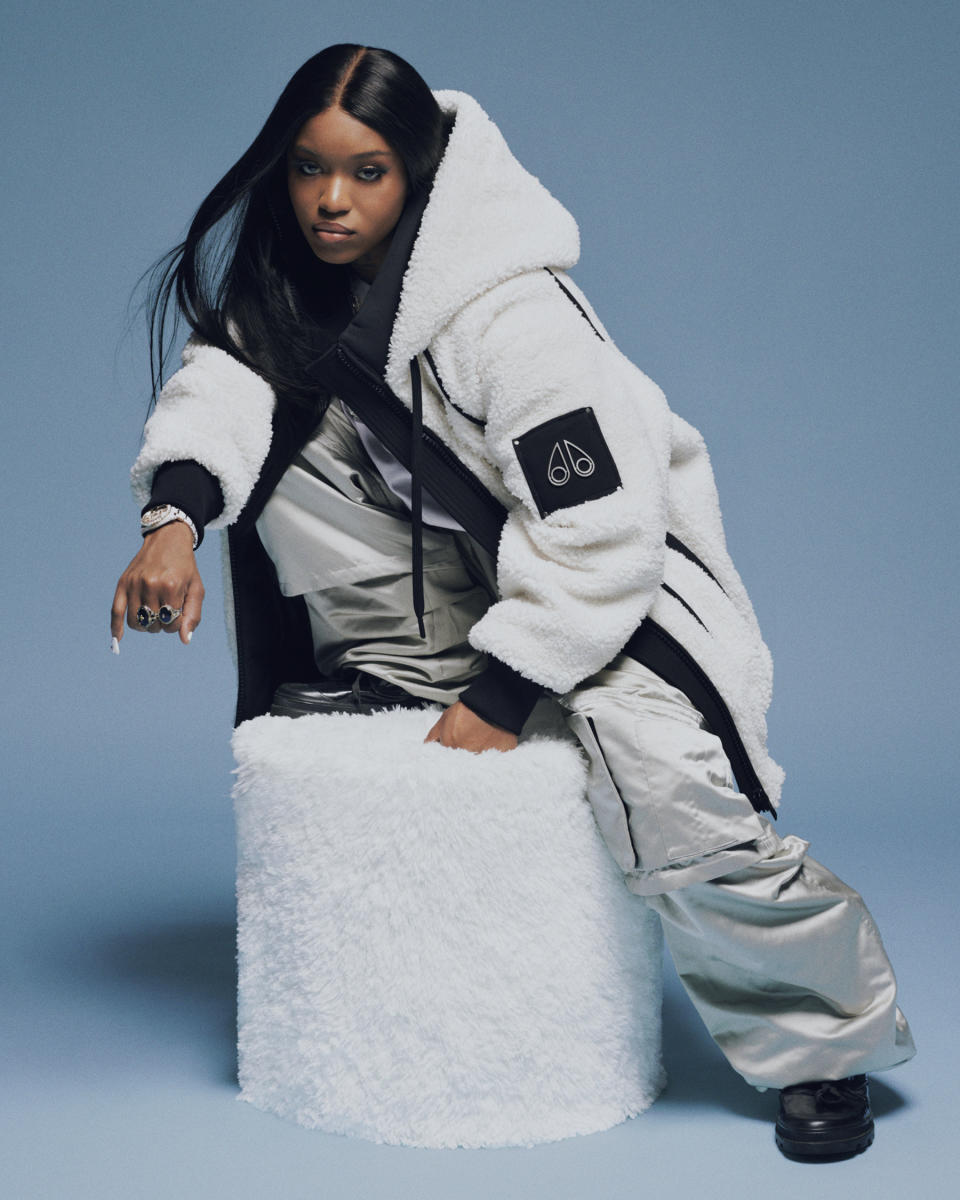
He said prices will be relatively stable in the fall. He said he’s very excited about Moose Knuckles’ new shearling offer. Many brands are moving away from farmed fur. “We have found a unique process, in leveraging a unique style of shearling that we’re keeping close to the vest, which has the same aesthetic and same functional features as traditional farm-fur would. We think it differentiates us going forward.” Luis said the company is not producing any more fur and will sell through the inventory it has.
Sophie Bambuck, chief marketing officer at The North Face, the activewear and outdoor sports brand owned by VF Corp., said, “For The North Face, 2023 will be an exciting time in product. Snow is still super relevant for the first half of the year, and we’ll continue our commitment to enabling snow exploration with performance-driven and style-forward designs.”
The company will reveal its Athlete Development Program and next phase of the initiative that started in 2021. The program was designed to recruit and foster emerging athlete talent in the outdoor sports space, “which we hope improves the outdoor athlete sponsorship dynamic with support through funding, gear, education and one-to-one mentorship from some of The North Face’s more than 150 sponsored athletes across the globe.”
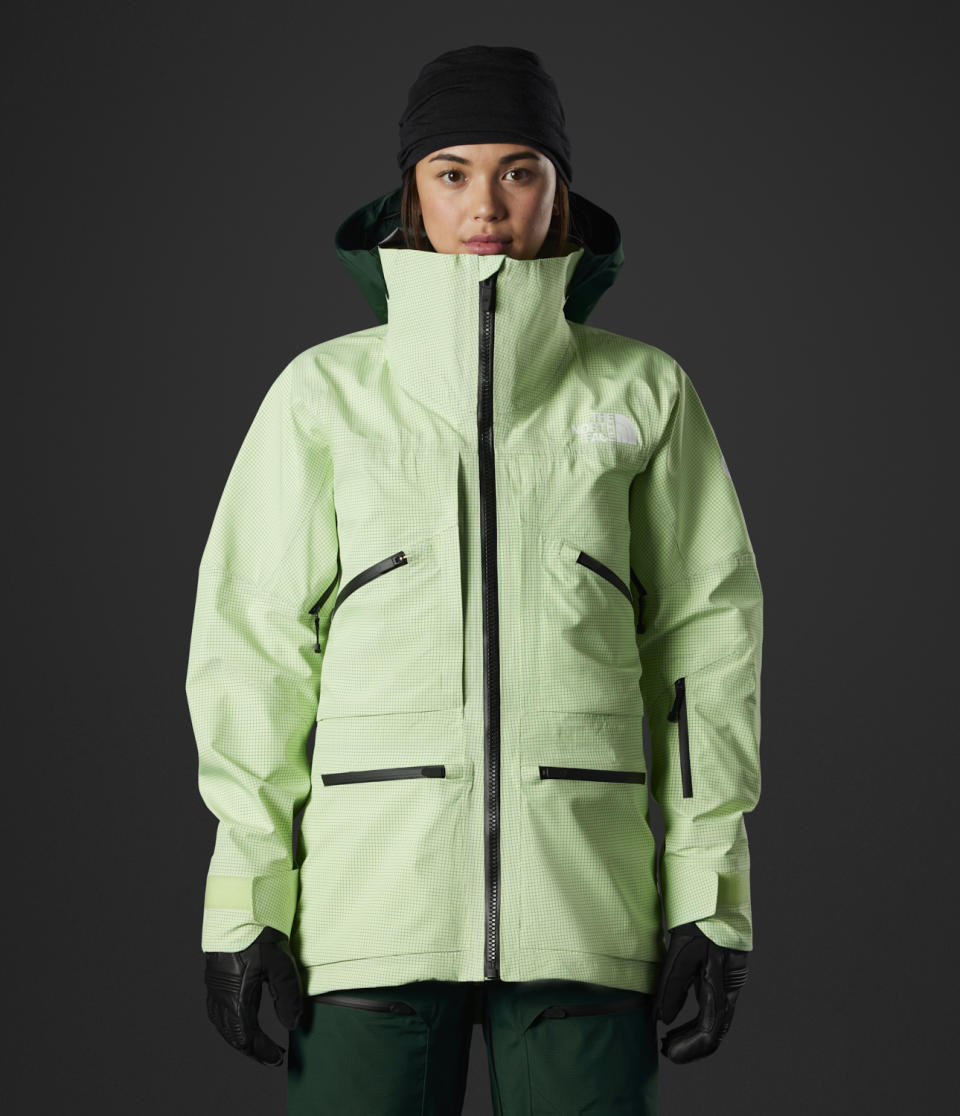
.
On the retail front, she said that over the next five years The North Face will open 300 additional retail and partner locations globally.
She said The North Face is making strides in its sustainability commitments, particularly through circularity with its Circular design program and Renewed, as well as notable launches, such as its first regenerative cotton products.
During the spring The North Face will have a continued focus on performance and innovation in its technical apparel, equipment and footwear, with expansion of its Vectiv technical footwear and trail running lines, as well as its camp, water and sun collections.
Early in 2023, the brand will bring its most premium trail running styles into the Summit Series badge — its most performance-driven and technologically sophisticated apparel and gear.
One launch she highlighted is a women’s-specific Himalayan Suit, which was first created in 1994 and has been used by alpinists to go to the world’s highest peaks. “The new suit will use a suite of innovative technologies to bring to market a suit that is lighter, more thermally efficient, more feature-rich than its predecessor, and is fine-turned to provide a high level of performance for women explorers,” she said.
Jenna Schwartz, president of SAM, a New York-based luxury outerwear firm, pointed out that outerwear season in the U.S. is September through January, and then the major retailers start marking the products down, or take them off the floor to turn the department into swim. “That’s been the classic retail timeline and model which we feel is kind of silly because it’s shifting forward, and the season doesn’t ramp up until now with all this ‘buy now, wear now,'” she said.
She said it’s very frustrating because the retailers are still on that timeline, but the stores see through their e-commerce sales that the business is shifting forward and people are still buying outerwear in the winter. “It’s frustrating for the brands because they’re asking for all the assistance at the end of the season, but the season is just starting up in January when it’s just getting cold,” said Schwartz.
“People used to buy ahead; now they buy it as they need it. We believe in more direct-to-consumer which seems to be the way the world seems to be moving,” she said. SAM sells through the spring on its website and doesn’t mark the jackets down.
She said outerwear sales in 2022 have “been soft because of the [warm] weather.”
She said SAM offers one big line a year. “We show it all together so that it’s one large collection because it’s just one product. It’s a multitude of styles in our colorways,” she said. For lightweight needs, SAM offers puffer vests. It introduced a sherpa collection of all-weather jackets that are made overseas and are wind resistant and water repellant.
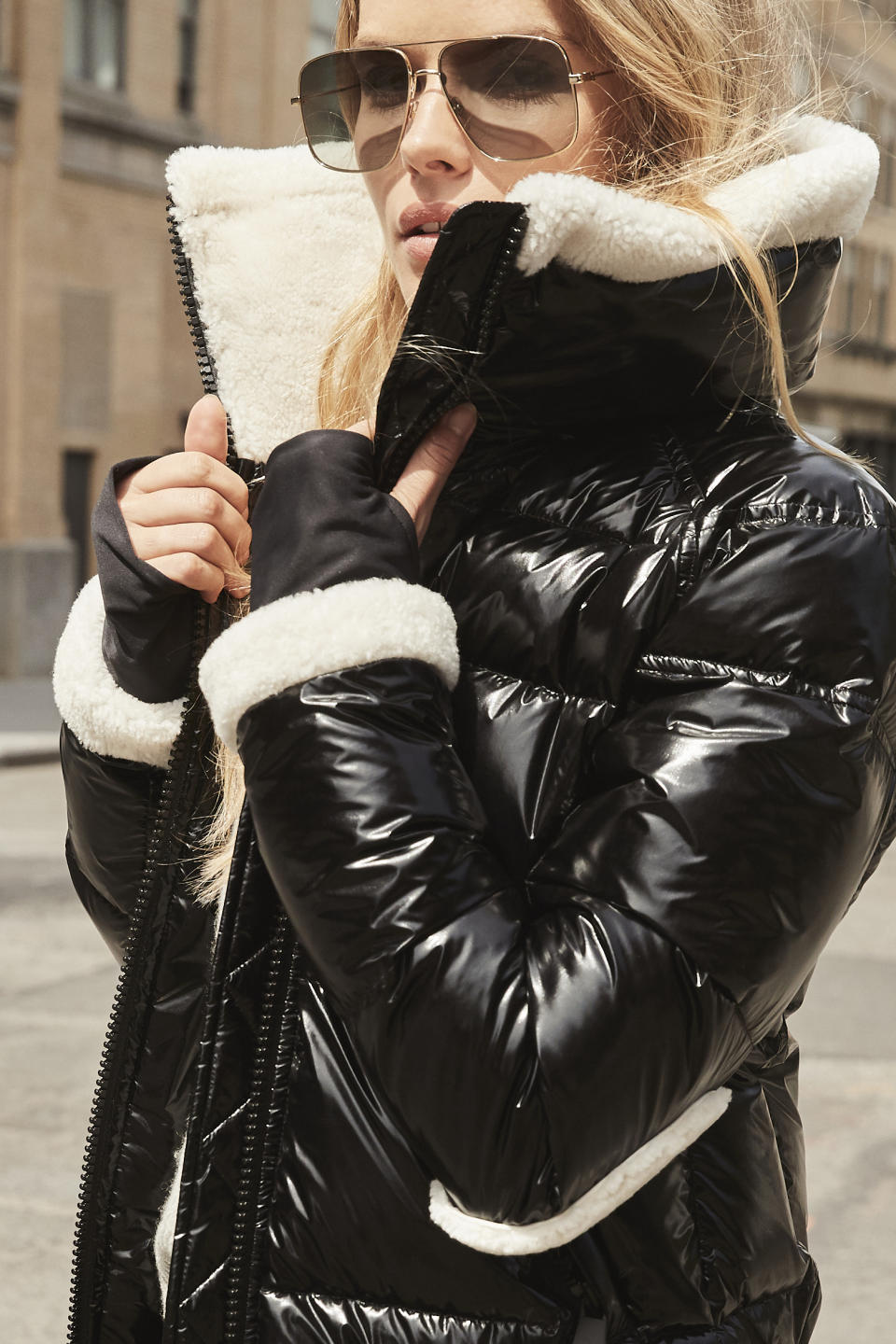
SAM will introduce its fall 2023 line in March. “We like to get a longer and stronger read on what’s selling and what to move forward with. A lot of the ski-inspired looks will carry over. They’re the retro-’70s ski silhouettes with a glamorous twist on them. We’re doing a lot of sherpa trims, replacing fur,” she said. Retail prices range from $400 to $2,000, and the bulk of the business is done between $400 and $800. The majority of the brand’s business is done through Saks Fifth Avenue and Bloomingdale’s.
During the pandemic consumers were seeking color in outerwear to add excitement in their wardrobe. “Now people want the classics and neutral colors are back to where it’s at. With the wellness movement, people are open to creams, beiges and ivories. It also ties in with the ski theme and the sherpa. It’s like a zen vibe in outerwear,” she said.

